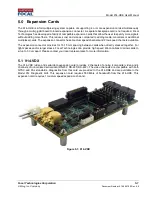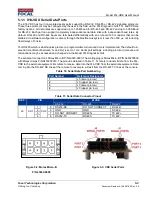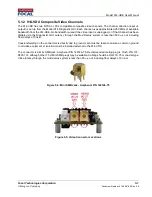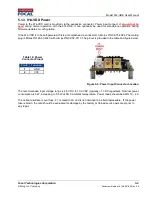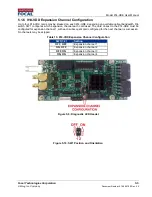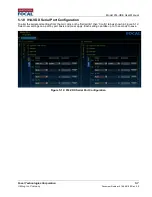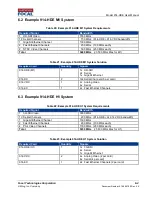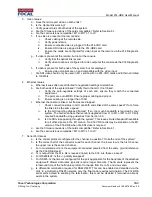
Model 914-HDE User Manual
Focal Technologies Corporation
7-2
A Moog Inc. Company
Document Number: 914-0601-00 Rev. 4.0
7.2 Bench Test
Basic Link Operation
Basic operation of the uplink (remote to console) and downlink (console to remote) can be verified in a bench
test simply by connecting fiber jumpers between the optical transceivers. The number of jumpers and the optical
attenuation required depends on the optical configuration of the system under test. In some optical
configurations, it may be required to use 5 or 10 dB optical attenuators placed between the fiber bushings on
the mux (remote) card and the bushings on the demux (console) card to ensure the optical receivers are not
saturated. Complete a flux budget calculation for your system, referring to the optical transmit power and receive
overload level to determine whether optical attenuation is required or not.
After power is applied to the 914-HDE, the power LED D6 should be on (green). A red Link Fault LED D9
indicates insufficient received optical power, typically due to excessive loss in the fiber link. Excessive loss may
be caused by poor fiber connections (contaminated bushings, damaged fiber, damaged ferrules) or excessive
fiber bends. It is good practice to carefully clean all fiber connections prior to mating them for testing or
installation.
If the basic optical link is present (LED D8 is on), there should be data continuity through the multiplexer system
to provide video and serial data links.
Optical Power Budget Test
1. To verify the console to remote flux budget (downlink), measure the transmit power of the console card
by connecting the optical output directly to a calibrated optical power meter using a short, low-loss,
singlemode test jumper. (Use 50 µm core multimode jumpers if it's a multimode system.)
2. Remove the test jumper and install a variable optical attenuator (VOAT) between the console and
remote cards.
3. Adjust the VOAT until the red Link LED on either one of the modules turns on, then reduce the loss to
the point where both green link LEDs are continuously on. A stable serial data connection is a good
reference point.
4. Measure the received optical power at the remote side by connecting that end of the VOAT to the
optical power meter. The difference between the transmit power previously measured and this receive
measured power is an estimate of optical power budget. A spool of fiber used with the VOAT can also
be used to simulate dispersion effects over long cable lengths.
5. Repeat steps 1-4 with connections reversed to verify the remote to console (uplink) optical budget.

